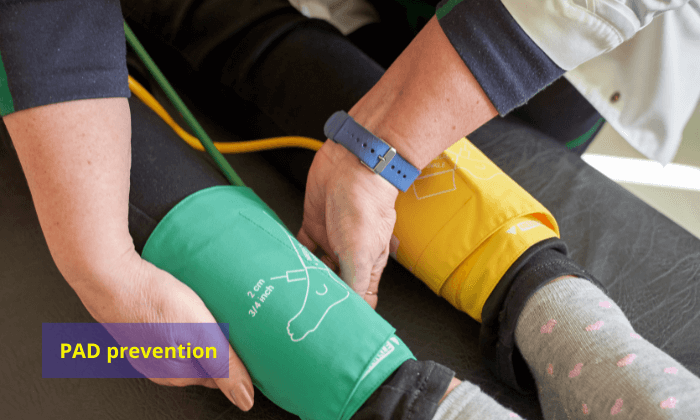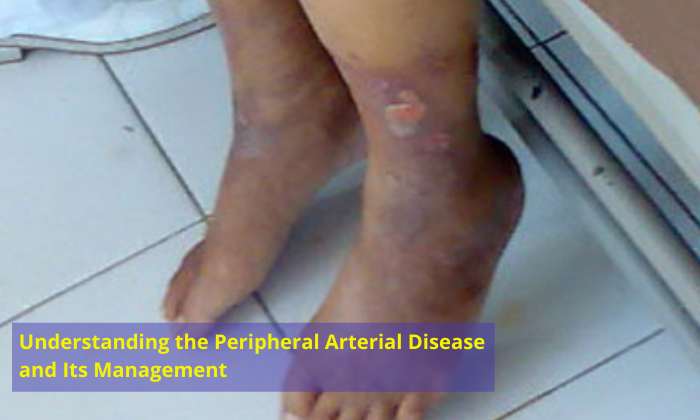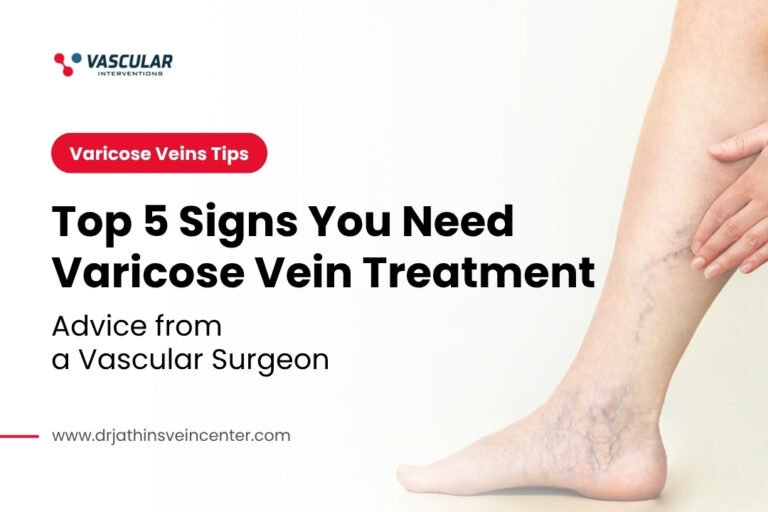Peripheral arterial disease (PAD) or peripheral vascular disease is a condition when arteries of the circulatory system go through atherosclerosis or hardening. Arteries are the blood vessels that commence the flow of oxygen and nutritional blood from the heart to different parts of the body. PAD takes place in the arteries that distribute blood to the arms and legs.
To understand how PAD forms, you need to know about the formation of plaque. Excessive fat, cholesterol, and a few other substances floating through the bloodstream contribute to the formation of plaque. In this way, with the formation of plaque, the arteries gradually get blocked.
Once this blockage occurs, the supply of blood for nourishment of organs and tissues adjourns, thus damaging the tissues or in due course, tissue death. Less commonly, radiation exposure, injured limbs, inflammation of blood vessels may also be the signs of arterial insufficiency.
symptoms of Peripheral Arterial Disease
Well, vascular problems in the legs emerge over a lifetime and in most cases, the symptoms generally show up in the later stage of life. In some cases, people have lenient or almost no symptoms while some go through leg pain (claudication) while walking and it disappears after a couple of minutes.
Claudication is often the first and most common symptom of peripheral artery disease. Arms and legs are triggered while physical activities go through cramping and muscle pain. The level of pain is highly dependent on the status of claudication, ranging from mild discomfort to severe pain. Mostly, the pain is experienced in the calf area but may also present in the buttocks and thighs.
In the case of severe conditions of PAD, the pain turns you enfeeble and interfere while walking or any other physical activity. However, you won’t notice the pain when at rest, because, at that particular time, the body seeks lower blood flow. Some advanced PAD symptoms include –
- The sensation of burning and aching while at rest
- Color changes in the skin
- Toe and foot sores
- Loss of hair or slower hair growth on legs
- A cold feeling in feet, especially when compared with the other side
Conditions associated with PAD
As discussed above, the symptoms of peripheral arterial disease vary from nil to severe pain. However, if left untreated, PAD can lead to serious health issues which include the following –
- Heart Attack – As the disease affects blood flow, lack of blood supply to the heart may cause perpetual damage to the heart muscle.
- Transient ischemic attack (TIA) – This is a condition that causes an interim supply of blood to the brain.
- Stroke – Stroke is similar to TIA but is way more serious, caused by interruption of blood supply.
- Amputation – In worst-case scenarios, it might be required to remove a part of the total foot or leg (in rare cases, arms too). This is specifically for patients who already have been suffering from diabetes.
Risk factors that increase the chances of getting PAD
Peripheral arterial disease and coronary artery disease share almost the same platform when it comes to the risk factors associated with their formation. However, both the conditions are different. But, it’s estimated that a person with PAD has almost seven times higher chances of fetching coronary artery disease or even heart attack. Some of the risk factors associated with PAD are as follows –
- Smoking
- Diabetes
- Increasing age
- High blood pressure
- High Cholesterol
- Abdominal obesity
- Kidney disease (it can be a consequence of PAD too)
- Higher levels of homocysteine ( an amino acid that helps the body to make protein)
Though new treatments for PAD have evolved pretty well and can help you get back to your normal lifestyle at the earliest, there are remedies to avoid the occurrence of PAD. After all, ‘prevention is better than cure.
Best practices to prevent PAD

The treatment for PAD aims to reduce the clinical manifestations of PAD and to put a stop to the further development of the condition. You would be happy to know, that exercises, changes in lifestyle, and some medication for pad pain can slow the process. In addition, if you carry good luck, these practices can even reverse the symptoms. Let’s take a look at them!
Cease Smoking
Not only for the pad, but tobacco is a major cause of various health issues. Talking specifically about peripheral arterial disease, smoking is a major risk factor. Though it’s not an easy task, seek nicotine replacements, anti-smoking medications, and behavior modification programs to help you ease the strain. Once you stop smoking, there will be a gradual decrease in the progression of PAD and a few other heart-related issues.
Indulge in physical activity
Regular physical activities play a great role in treating manifestations of PAD. Your doctor may recommend supervised exercise training (SET), which includes leg exercises and easy walking regimens. However, in case of intermittent claudication, this program alternates activity and rest so that you can walk intervals before the pain sets in.
A healthy diet helps a lot
High cholesterol levels contribute a lot to the development of PAD. So, consider a diet that is tentatively low in terms of saturated and trans fats. Additionally, medications for lowering cholesterol levels are also an option, but you should consult with a doctor.
Include a healthy diet consisting of fruits, vegetables, and whole grains along with low-fat dairy products, poultry, seeds, nuts, and tropical vegetable oils. Opt out or put a limit on the consumption of red meat, sodium, and sugar-sweetened beverages.
Beware of cold medications
Medicines that are sold over-the-counter, to help you fight cold need to be avoided as they contain pseudoephedrine. This medication narrows your blood vessels and might increase your PAD symptoms.
Hope after checking out this write-up, you’ve been able to develop an understanding of the concept and management of peripheral arterial disease. If you’ve noticed any symptoms of PAD, consider consulting the best doctor offering peripheral vascular disease treatment in Mumbai, or wherever you put up. This will help you in getting the relevant information about a lot more related steps to combat PAD including the necessary vitamin intake, dietary routine, and more. Taking good care of your health can award you with a blissful life!





